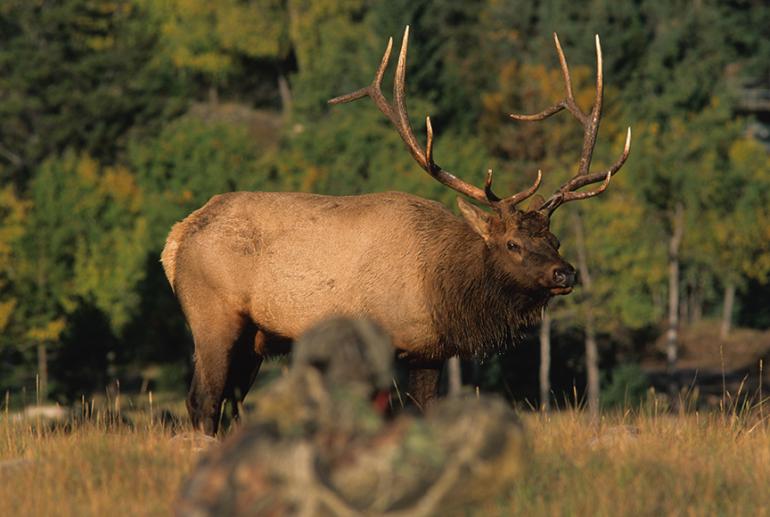The Grandest Game
Hunting the mighty wapiti.
It’s mid-September and a cool wind blows off the mountain. The trees have their leaves, but they’re changing: trunks are hardened, branches more brittle. Reverberating off these ossified boughs are the bugles, barks, and bellows of elk, giving the forest an eerie, melodious mien. On the ground, squirrels gather nuts and cones, making great piles in hollow limbs. Fine and full-throated they are, these unique autumn overtures; the forest thrums amid the vicissitudes of a new season.
Now is the time of the elk, the mighty wapiti, the worthiest quarry a hunter will find. Smart and strong, big and fast, wary and wily: elk are all this and more. They thrive in unforgiving terrain. Infiltrating the wild and rugged world they call home is not easy. One false move and you’re busted. A less-than-perfect bugle or cow call and they know it, turning tail and disappearing into the timber. When the wind shifts ever so slightly, that impeccable snout gives you away and sends them scurrying—maybe for the day, possibly the entire season.
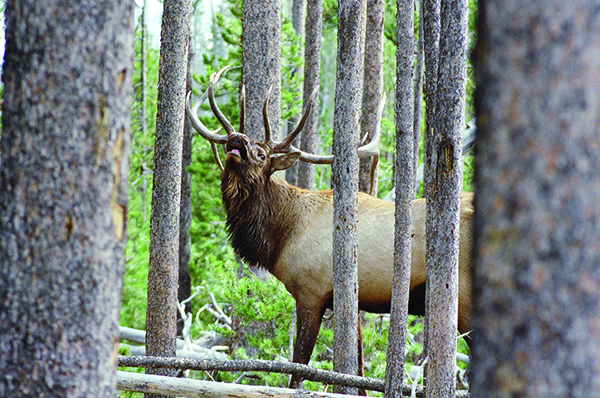
Cow or bull, bow or rifle, frontcountry or deep in the wilderness, taking an elk is no mean feat. And like the busy squirrel, we must stack the odds in our favor. So we practice our shooting, glass the ridgelines, and gather our wits. If we do everything right, and are blessed with a little luck along the way, we might get a shot at an elk—followed by a freezer full of meat, a story to share with friends, and memories to last a lifetime.
Habitat
Elk occupy the country we all love to occupy. They forage high-alpine meadows one week and bed down in grassy foothills the next. They’ll browse the sagebrush benches and take cover in the timber. Throughout the summer, like us, they move freely among the public-land havens scattered throughout southwest Montana. Come fall, many move onto private land. Their ability to remember, season to season, where safety lies is remarkable and can prove challenging even for the most enterprising hunter. Weathercan also determine where a herd might be. If winter comes early to the high country, you’ll find most elk have moved down onto the tree-less benches of our river valleys, hoping for an easy meal among the snow-free grasses and harvested wheat fields.
Behavior
Like most ungulates, males and females behave much differently, and their behavior is further defined by the time of year. Early fall finds both genders deep in the shaded timber and dark canyons, where they’re harder to find, stalk, and shoot. Cows tend to herd up, in small or large groups. Before and after the rut, bulls are solitary or live in bachelor clans. During the rut, dominant bulls gather harems; the size depends on numerous variables but ranges from a few cows to a few dozen.
Elk can move great distances, depending on weather, water needs, and hunting pressure. They’ll often stick around a given area for days, but just as often, they’ll move from one major drainage to another in a single day. You’ll want to spend a lot of time behind the binos, and be ready to cover some serious ground on foot.
Weather is another key factor in determining where elk might be come hunting season. Indian summers delay their descent out of the high country. If the snows come early, elk will generally move down into the valleys. Snow also makes elk easier totrack, another benefit to the hunter.
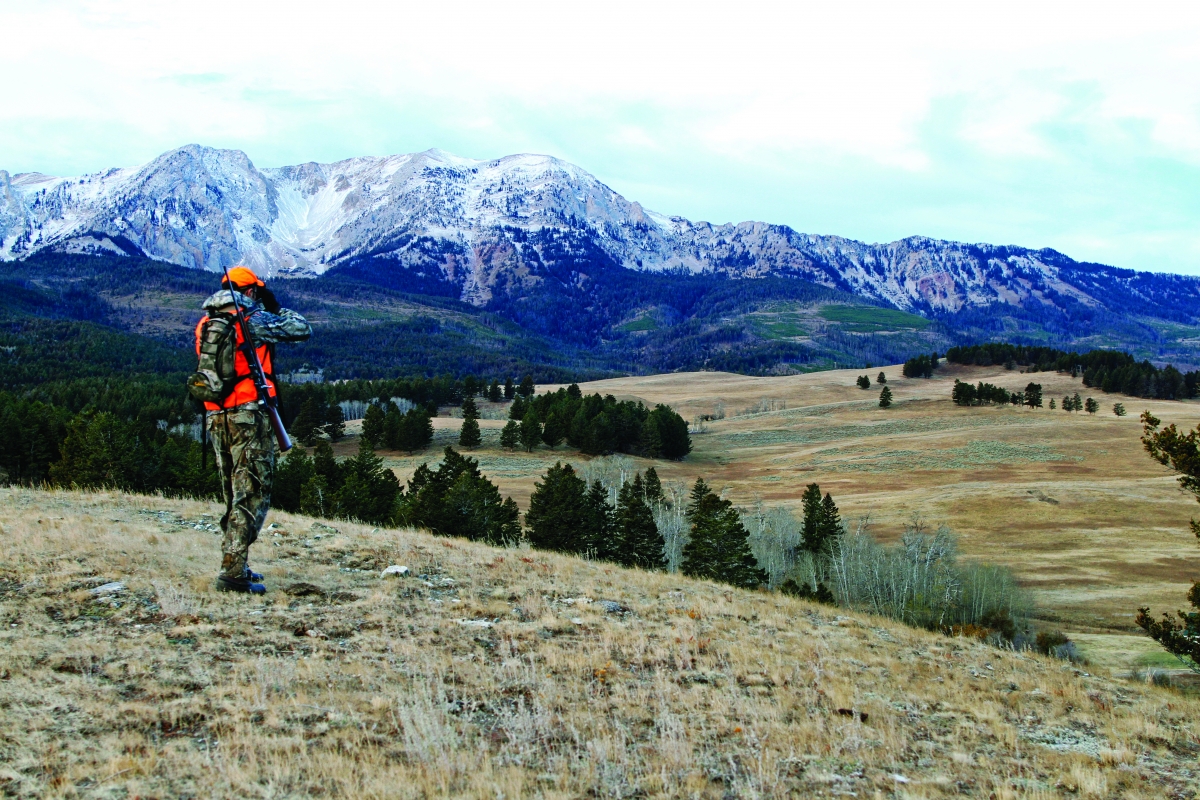
Gear
Aside from a good rifle or bow, you’ll need a mountain of gear for a successful elk hunt. In southwest Montana, wapiti—Shawnee for elk—tend to hide out in steep subalpine terrain. That means you’ll need good boots, something with enough traction and ankle support to keep you from taking a tumble or suffering a sprain. Think about insulation and gaiters later in the season as snow starts to pile up. You’ll also want a hunting-specific pack. Even if you shoot a small cow, there’s no way you’re dragging your elk out of the woods alone. You’ll need a pack that can support all your gear, plus the added weight of an elk quarter. Next, include layers for winter-like temps and emergency gear for an impromptu overnight. Include fire-starter, an insulating bivy sack or light sleeping bag, and maybe a small tarp. Binos are a must for glassing, and a rangefinder helps ensure a clean kill. For dressing, you’ll want game bags to keep your meat clean and moist. To protect yourself from roaming grizzlies, carry bear spray.
If you’re bow hunting, crank up that draw weight to the max you can comfortably handle. Rifle hunters should use a proven 30-caliber cartridge: .308, .30/06, .300 Win. Mag. Good, experienced shooters can get by with a .270, but the bigger the round, the more likely the animal will go down with a less-than-perfect shot.
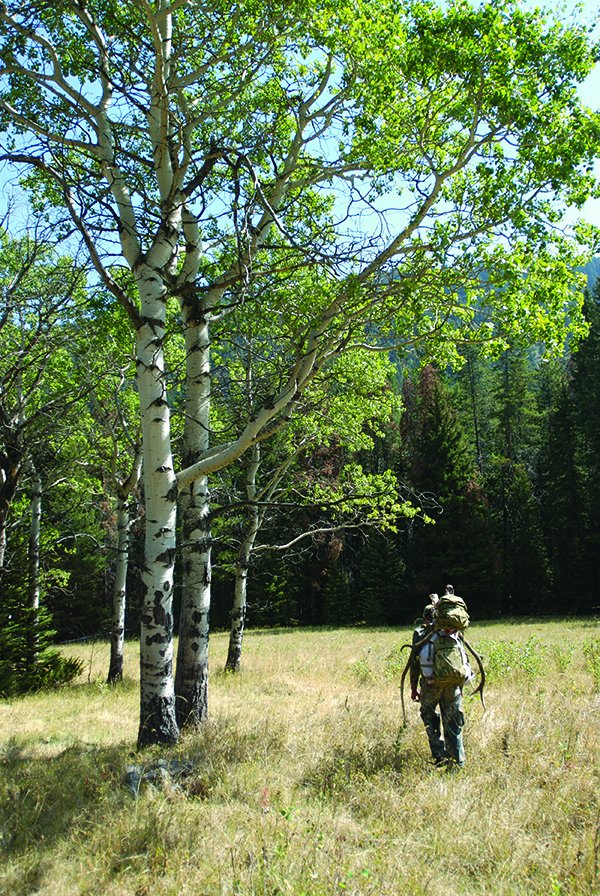
Bow vs. Rifle
Hunting elk with a bow is certainly a challenge, but it’s worth the effort. The advantage is timing: archery season comes before rifle season, so your quarry isn’t as on edge as it will be come early November. Obviously, you have to get up close and personal with your target for a successful kill, but knowing you’ve harvested a year’s worth of meat with just a bow and arrow is quite rewarding—and the thrill of a screaming, 800-pound beast coming in hot is beyond comparison. Many longtime hunters have hung up their rifles for good, and converted to bow hunting exclusively, after this experience.
Rifles offer the obvious advantage of distance, but later in the season, elk have been educated and tend to hide out more. Plus, you’ll be sharing the landscape with other orange-clad bipeds, some of whom will stumble through at the wrong time and ruin your hunt.
Whether you’re slinging broadheads or bullets, practice is paramount. A missed shot is depressing; a wounded animal is devastating. Practice standing, sitting, kneeling, around corners… whatever position you might find yourself in while out in the field.
Pack-Out
Unlike deer and antelope, elk almost always have to be dressed, quartered, and packed out. That means that you’ll need the right equipment and the right practice for getting the most out of your animal. Don’t assume anything. If you’ve never field-dressed an animal, don’t go shoot one, unless you’re with someone who has the experience. Know how to keep your kill safe from heat and scavengers, and avoid hunting near trails and campsites. You don’t want to turn a popular hiking trail into a grizzly’s buffet line.
If you have the skills and experience (or the right friends), consider using packhorses. They’ll carry the burden on the way out, provided you can get the quarters to your horses. Many elk go down on steep slopes or in deadfall-laden forests, where a heavy-laden horse will have a tough go of it.
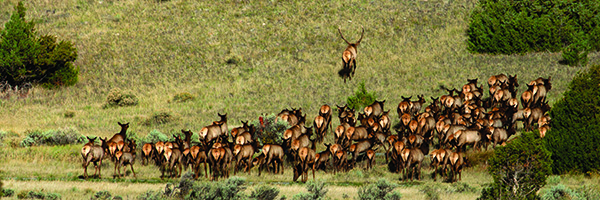
Rut
Elk mate in September and early October, and rutting bulls drastically change the social climate. Rutting bull elk are a sight to see, even if you aren’t a hunter. Worthy combatants clashing, often violently, over the right to pass their genes to the next generation… it’s a spectacle indeed. The rut is also the best time to hunt big bull elk. Their singular focus for this short stretch of time overwhelms their survival instincts, giving the hunter an advantage, albeit a slight one. Taking that advantage might seem like cheating, as if you’re dishonoring the guy code; but it is a perfectly justifiable way to fill your tag, especially with a bow. Even the most sex-crazed bull can elude a bowhunter who makes a simple mistake or suffers an untimely shift in the wind. Rutted up or not, they’re still elk, and everything has to fall into place in order for you to fool one.
Regs
In Region 3, the regulations around elk hunting are sacred and not to be trifled with; hunter-success rates here are some of the highest in the country and the best in the state. Remember that our hunting access is only as good as our behavior, so mind the regs. Be mindful of the hunting districts your tag is good for, and only hunt those areas. Fill the tags you get and abide by all other FWP rules. For an update, visit fwp.mt.gov and keep the printed regs with you at all times.
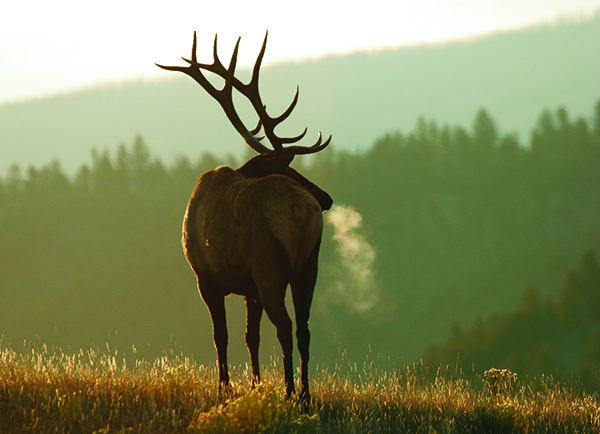
For more on elk hunting and habitat-conservation efforts, visit rmef.org/montana/gallatin.


